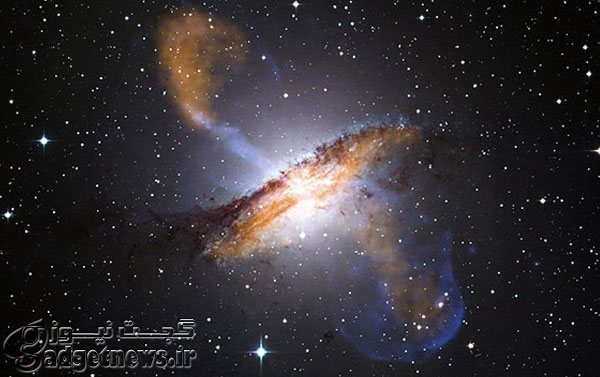
اگر شما بیش از اندازه بدشانس باشید، این احتمال وجود دارد که روزی با یک سیاهچاله عمیق در فضا روبرو شوید و پس از آن با موقعیتی به نام ” افق رویداد” روبرو خواهید شد که هیچ راه فراري برای شما و حتی برای نور وجود ندارد.
به لطف تلسکوپ رادیویی به گستره زمین(تلسکوپی که از ترکیب تلسکوپهای مختلف جهان بوجود آماده) ، دانشمندان احتمالا به زودی خواهند توانست به پاسخی برای این سوال دست یابند که در صورت برخورد با این سیاهچالهها آیا راه گریزی وجود خواهد داشت یا خیر؟ پاسخ این سوال از کمک به فضانوردان تا حل تئوری انیشتین، اهمیت خواهد داشت.

نکته جالبتر اینکه تلسکوپی مستقل به نام GRAVITY در شمال شیلی به زودی مشخص خواهد که آیا سیاهچاله صورت فلکی A در مرکز کهکشان ما واقعا یک کرمچاله است یا خیر؟ در واقع میتوان هاله گاز اطراف سیاهچالهها را به خوبی مورد بررسی قرار داد. سیاهچاله و کرمچاله باهم تفاوتهایی دارند. برای مثال، سیاهچالهها اگرچه از نظر تئوری میتوانند با گذشت زمان زیاد، توسط ستارههای عظیمالجثه مملو شوند اما به همان اندازه، حجم آنها بزرگتر خواهد شد.

کرمچالهها از شرایط مشابهی در این زمینه برخوردارند اما از سیاهچالهها کوچکترند. GRAVITY به بررسی سیاهچاله کهکشان ما خواهد پرداخت و به دنبال انرژیهای ساطع شده از کرمچالههای ایجاد شده با گردش پلاسما ( آنچه در شکل بالا مشاهده میکنید) خواهد بود.
منبع : engadget
Leaving wormholes aside for a moment, the Event Horizon Telescope is designed to spy the structure of “regular” black holes. Located in Chile, it combines multiple radio telescopes around the world and an extraordinarily precise atomic clock to simulate one huge, earth-sized telescope. When trained on black holes, it should deliver pictures of a very bright ring of gas surrounding a circular dark spot, as close to “imaging” one as we’re likely to get (considering they emit no light). Along with pretty pictures, it may give insight about whether a black hole’s event horizon would allow matter in before elasticizing it or be an impenetrable “firewall” that incinerates anything foolish enough to enter.
The GRAVITY telescope, meanwhile, is designed to image black holes for a different purpose. Instead, it’s looking to see if our own Milky Way galaxy’s Sagitarius ‘A’ isn’t a black hole at all, but a wormhole. Both types of structures contain an impenetrable event horizon, but are otherwise very different. For instance, black holes can theoretically evolve over long periods of time following the collapse of large stars and become massive. Wormholes are also permitted by general relativity, but evidence of a real one has never been observed. If they do actually exist, though, they were likely formed in a split second after the big bang and would be smaller than block holes. And as any science fiction buff knows, wormholes aren’t bottomless pits like black holes but can join two vast sections of space-time, or even two separate universes. GRAVITY will observe our galaxy’s black hole, and look for telltale energy signatures of wormholes created by orbiting plasma (see below). As for the rapid space-time travel, though, don’t hold your breath — while stabilizing a wormhole is theoretically possible, it wouldn’t be easy.
 گجت نیوز آخرین اخبار تکنولوژی، علم و خودرو
گجت نیوز آخرین اخبار تکنولوژی، علم و خودرو 





